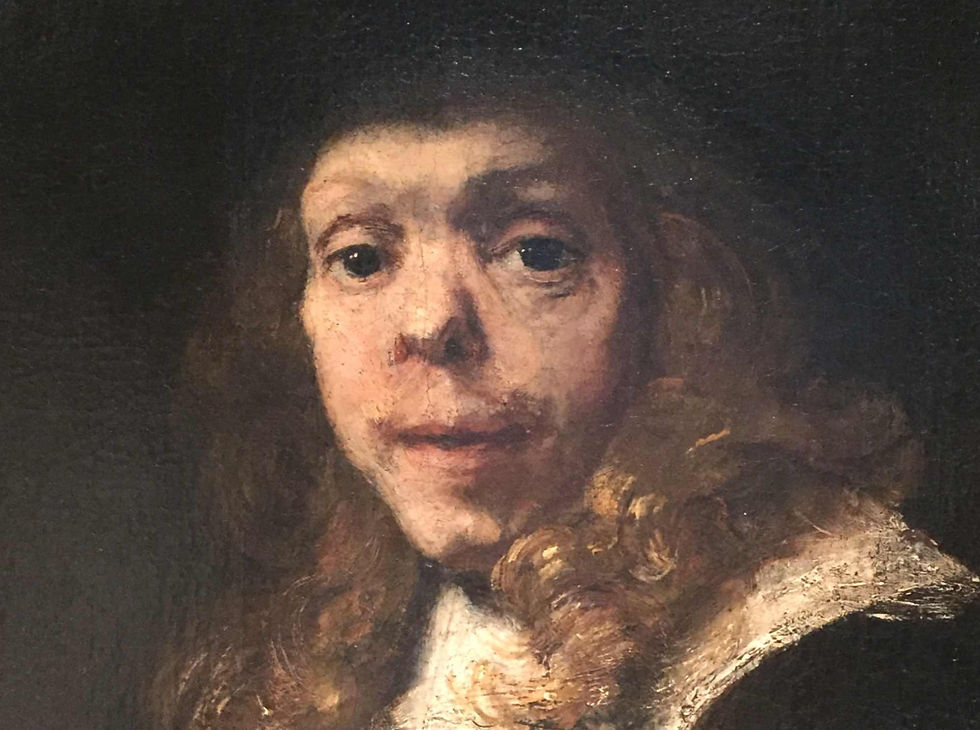Next Steps: Tracking Down Nouwen, Van Gogh and Rembrandt
- smegburke
- Jan 16, 2020
- 2 min read
Updated: Feb 8

I realized last summer, while away at an apologetics conference, that I have a rather entrenched reluctance to talk about my own stories. I was giving a brief talk on beauty, and I received a few responses, that perhaps I could have brought in my own experiences. But aren’t my experiences a bit staid, common, boring? Or maybe too raw and vulnerable? I’m still working through this, and the fear of over-exposure that seems to be at the heart of my hesitance. (A blog is certainly stretching in this area!)
I’m starting a course on Henri Nouwen, and two artists he learned from - Rembrandt and Van Gogh. All three seem to have had rather unconventional and challenging paths. Nouwen was a priest, an Ivy League academic, at one point living in Latin America, then among people with disabilities at L’Arche, outside of Toronto. Van Gogh drifted from job to job, studying theology for a time, and seeking to work for the church, then living with poor coal miners. His unconventional approach meant he was seen as unfit by the church.

Rembrandt lived during a religiously and politically turbulent time following the Reformation, and painted through a plague. A friend pointed me to Nouwen's reflection, on Rembrandt’s portrait of his son painted during this time: “I keep thinking about this as I wonder what to do when all around me there is so much human suffering. Rembrandt seems to say that it is important to do well the few things we can do and remain faithful to our vocation, limited as it may seem.” Reading through their biographies and letters has reminded me of the value of solidarity through our stories, faithfulness to the beautiful and hard things of life.

During a visit to my sister and brother-in-law in New York, I found respite from Manhattan’s holiday crush in a quiet room filled with Rembrandt’s paintings, and a couple of more bustling rooms of Van Gogh’s. Neither artist shied away from real engagement with what was before them, occasionally to the chagrin of their critics. Rembrandt is known for his many self-portraits, honestly capturing his aging face, sometimes joyful, sometimes searching. I was particularly struck by his portrait of a fellow-artist, likely disfigured by syphilis. Van Gogh occupied many canvases with peasant life, and his work-worn shoes are full of pathos.
I’m hoping this course helps direct my next steps, as I continue to navigate dialogue between art and faith, and where it may lead. I also hope to become more open to sharing my stories, while also growing in receptivity to others’.
Sources:
Love, Henri: Letters on the Spiritual Life, Convergent Books, 2016.



Yes I should @smegburke! Any suggestions for the National? Joe and I are going on Thursday😁
@carolanneburke - I think that book is on the course reading list, I'm glad to know you have a copy, and am looking forward to reading it! It seems Van Gogh really had a lot of empathy for people of low status, enobling and recovering beauty in everyday people and things. Even his pretty flowers are sometimes on the brink between living and fading. Excited to learn more (and you should come to the MET with me next time!)
Love this one too, after reading Learning from Henri Nouwen & Vincent Van Gogh, a
Portrait of the Compassionate Life by Carol Berry. Previously, I had been focused on the artists extraordinary drawings and paintings in a rather superficial way. But this was a revelation of magnitude to me: Van Gogh’s life of compassion.
So Van Gogh’s life wasn’t all about pretty flowers. Take for example The Potato Eaters. ‘In its ordinariness [the painting] could invite people ti identify with it...it would uplift a simple meal to a level of extraordinariness’ an example of him elevating the menial to a much higher more worthy level.